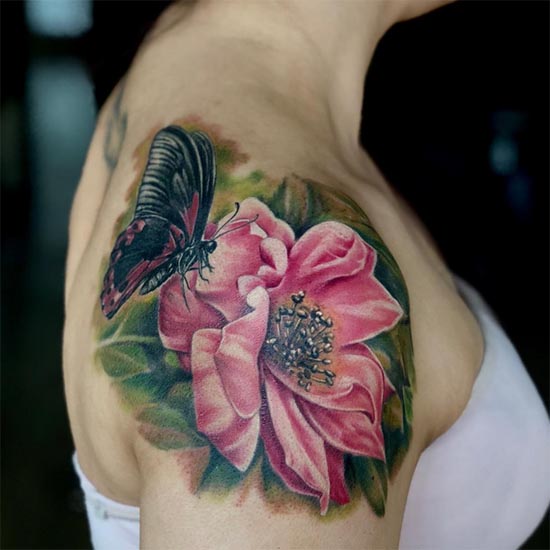What Are Tattoos? A Brief Introduction to Tattoos
What Are Tattoos? A Brief Introduction to Tattoos
Blog Article
Tattoos have been a part of human culture for thousands of years, serving as a form of self-expression, identity, tradition and even spirituality. From ancient civilizations to modern society, tattooing has evolved, adopting various styles, techniques and meanings. Here, we will explore the origins, cultural significance, different types and contemporary relevance of tattoos, offering a comprehensive introduction to this age-old art form.

For more details visit:
https://www.tattoosnewdelhi.com/gurgaon-gurugram-tattoo-studio-artist/
The Origins and History of Tattoos
The history of tattoos dates back over 5,000 years. Evidence of early tattooing has been found on mummies and ancient artifacts, signifying their deep-rooted presence in human history.
- Ancient Civilizations: The earliest known tattoos were discovered on the mummified body of Ötzi the Iceman, dating back to around 3300 BCE. His tattoos, consisting of simple dots and lines, are believed to have had medicinal or ritualistic significance. In Ancient Egypt, tattoos were primarily seen on female mummies, suggesting that they may have been used for religious or protective purposes. In Polynesian cultures, intricate tattoo designs symbolized social status, achievements and lineage.

- Tattooing in Asia: In Japan, irezumi (traditional Japanese tattoos) were initially associated with spiritual beliefs but later became linked with the yakuza (organized crime groups). In India, tattoos (referred to as ‘godna’ in tribal communities) have been used for cultural identity, protection and even as a mark of beauty.
- Western Influence and Tattooing in Europe: During the Age of Exploration, sailors brought tattooing practices from Polynesia and the Pacific Islands to Europe. These tattoos often symbolized their journeys, experiences or personal beliefs. By the late 19th and early 20th centuries, tattoos became more popular in Western societies, particularly among military personnel.
For more details visit:
https://www.tattoosnewdelhi.com/dwarka-tattoo-studio-artist/
https://www.tattoosnewdelhi.com/greater-kailash-gk-1-tattoo-studio-artist/
Types of Tattoos
Tattoos have evolved significantly, offering a wide range of styles and techniques. Some of the most popular types include:
- Traditional Tattoos: Characterized by bold lines and bright colors, these tattoos often feature classic motifs such as anchors, skulls and roses.
- Realism Tattoos: These tattoos aim to replicate photographic images, including portraits, animals or nature-inspired elements.
- Tribal Tattoos: Originating from indigenous cultures, tribal tattoos consist of black geometric patterns and symbolic designs.
- Watercolor Tattoos: These tattoos mimic the look of watercolor paintings, blending colors seamlessly for an artistic effect.
- Minimalist Tattoos: Featuring simple lines and subtle designs, these tattoos are favored for their elegance and understated beauty.
- Biomechanical Tattoos: Inspired by machinery and anatomy, these tattoos create an illusion of mechanical elements beneath the skin.
- Lettering and Script Tattoos: Featuring quotes, names or significant words, these tattoos are personal and meaningful.
The Process of Getting a Tattoo
Tattooing involves several stages, ensuring a safe and high-quality result. The process includes:
- Choosing a Design: The first step is selecting a design that holds personal meaning or aesthetic appeal.
- Consultation with a Tattoo Artist: A professional tattoo artist helps refine the design and placement.
- Preparing the Skin: The tattooed area is cleaned and shaved before the stencil is applied.
- Tattooing Process: Using a tattoo machine, ink is deposited into the skin through tiny needles.
- Healing and Aftercare: Proper care, including keeping the area clean and moisturized, is essential for preventing infections and ensuring long-lasting results.

Cultural and Social Significance of Tattoos
Tattoos hold various meanings across different cultures and individuals. Some of their common significances include:
- Personal Expression: Many people get tattoos to express their beliefs, experiences or creativity.
- Spiritual and Religious Significance: In some cultures, tattoos are seen as protective amulets or representations of spiritual devotion.
- Memorial and Tribute Tattoos: Tattoos serve as a way to honor loved ones, significant life events or personal milestones.
- Cultural Identity: Indigenous communities use tattoos to signify heritage, tribe affiliation and traditions.
- Rebellion and Subculture Association: Throughout history, tattoos have been associated with rebellion, counterculture movements and groups such as bikers and punk communities.
Modern-Day Popularity and Trends
In contemporary society, tattoos are more accepted and popular than ever. Several trends and factors contribute to their growing appeal:
- Celebrity Influence: Many celebrities showcase their tattoos, inspiring fans to get inked.
- Advancements in Tattoo Technology: New ink formulas, equipment and techniques have improved the quality and variety of tattoos.
- Social Media Exposure: Platforms like Instagram and Pinterest have made tattoos more accessible, allowing people to explore designs and connect with artists.
- Tattoo Removal and Modification: With advancements in laser tattoo removal, people are more open to getting tattoos, knowing they can be altered or removed.
Tattooing and Its Challenges
Despite their popularity, tattoos come with certain challenges and considerations:
- Health Risks: Improper hygiene and unsterile equipment can lead to infections or allergic reactions.
- Social Stigma: Some conservative cultures or workplaces may still view tattoos negatively.
- Pain and Healing Time: Tattooing can be painful and the healing process requires careful maintenance.
- Regret and Removal: While tattoos are meant to be permanent, some people may later regret their decision.
Conclusion: The Everlasting Appeal of Tattoos
Tattoos have been a fundamental part of human culture for centuries, evolving from ancient traditions to modern artistic expressions. They serve as a means of storytelling, self-identity and creativity, allowing individuals to carry meaningful symbols on their skin.
With continuous advancements in tattoo artistry and growing social acceptance, tattoos remain an enduring and influential form of body art. Whether chosen for personal, cultural or aesthetic reasons, tattoos represent a powerful way for individuals to leave a lasting mark on their own bodies and the world around them. Report this page